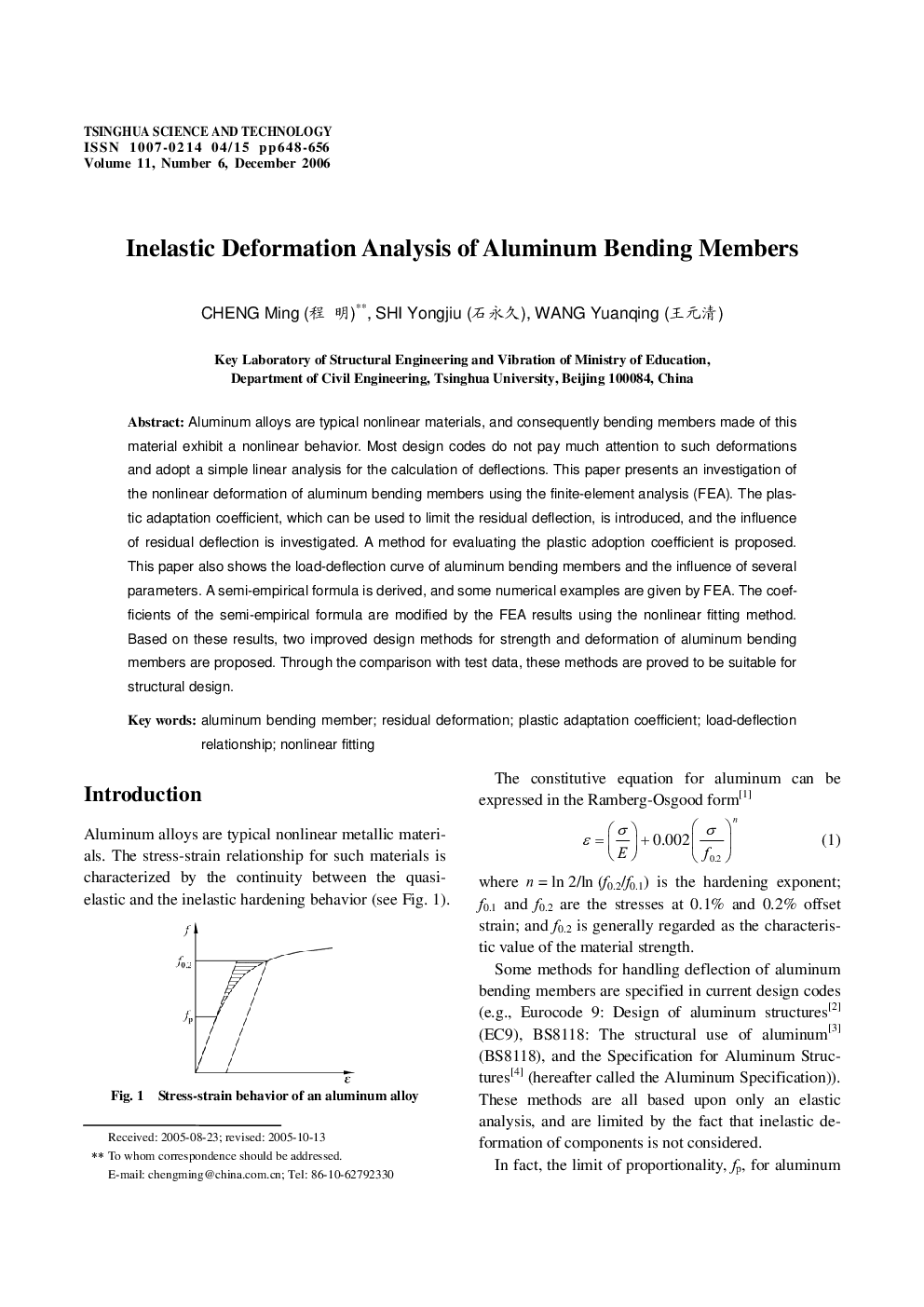| Article ID | Journal | Published Year | Pages | File Type |
|---|---|---|---|---|
| 865901 | Tsinghua Science & Technology | 2006 | 9 Pages |
Abstract
Aluminum alloys are typical nonlinear materials, and consequently bending members made of this material exhibit a nonlinear behavior. Most design codes do not pay much attention to such deformations and adopt a simple linear analysis for the calculation of deflections. This paper presents an investigation of the nonlinear deformation of aluminum bending members using the finite-element analysis (FEA). The plastic adaptation coefficient, which can be used to limit the residual deflection, is introduced, and the influence of residual deflection is investigated. A method for evaluating the plastic adoption coefficient is proposed. This paper also shows the load-deflection curve of aluminum bending members and the influence of several parameters. A semi-empirical formula is derived, and some numerical examples are given by FEA. The coefficients of the semi-empirical formula are modified by the FEA results using the nonlinear fitting method. Based on these results, two improved design methods for strength and deformation of aluminum bending members are proposed. Through the comparison with test data, these methods are proved to be suitable for structural design.
Related Topics
Physical Sciences and Engineering
Engineering
Engineering (General)
Authors
Cheng (ç¨ æ), Shi (ç³æ°¸ä¹
), Wang (çå
æ¸
),
